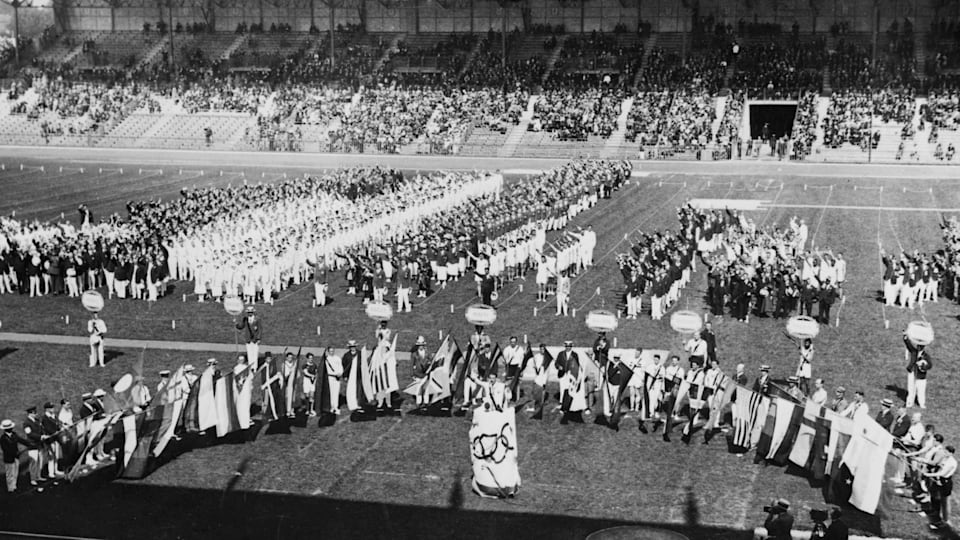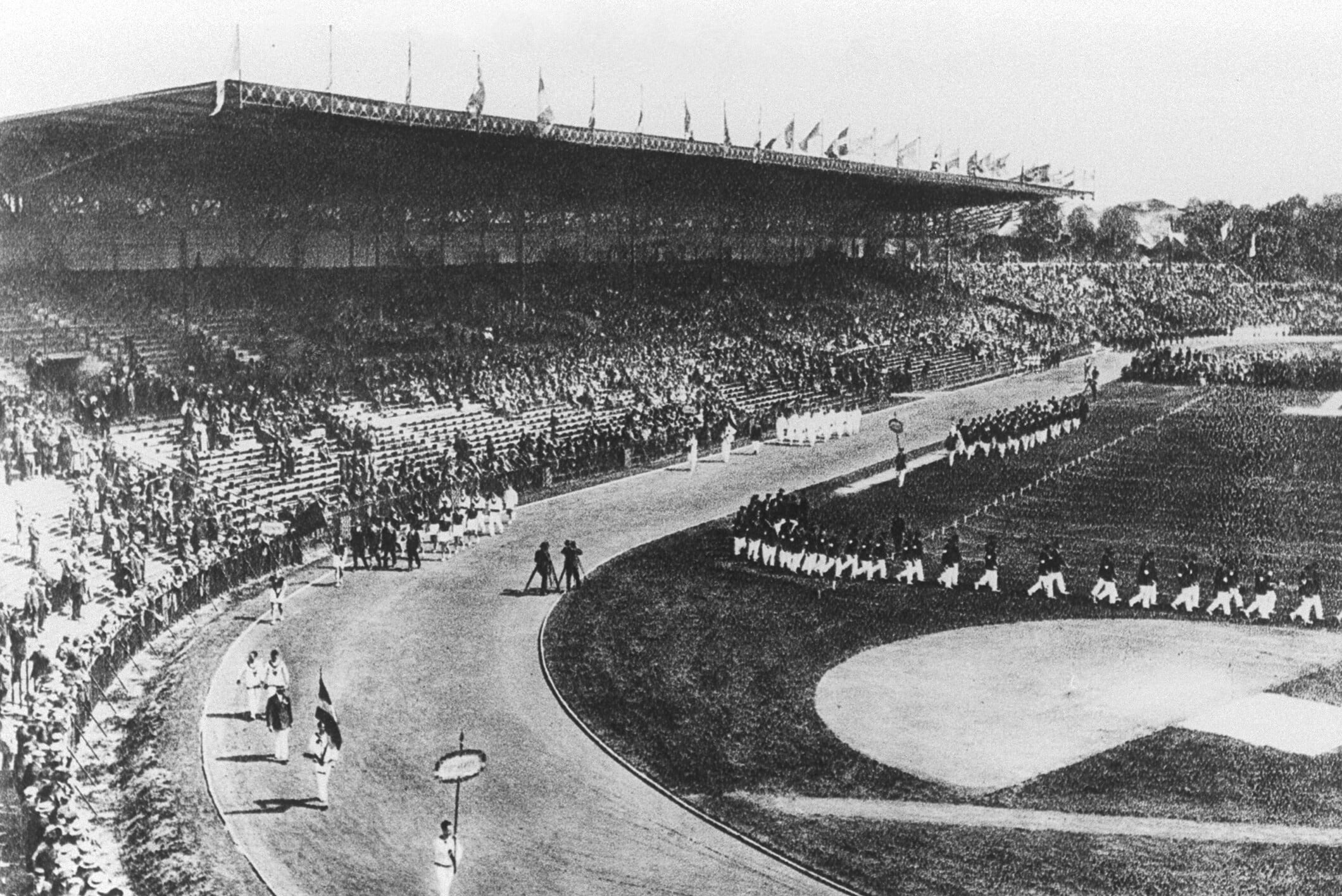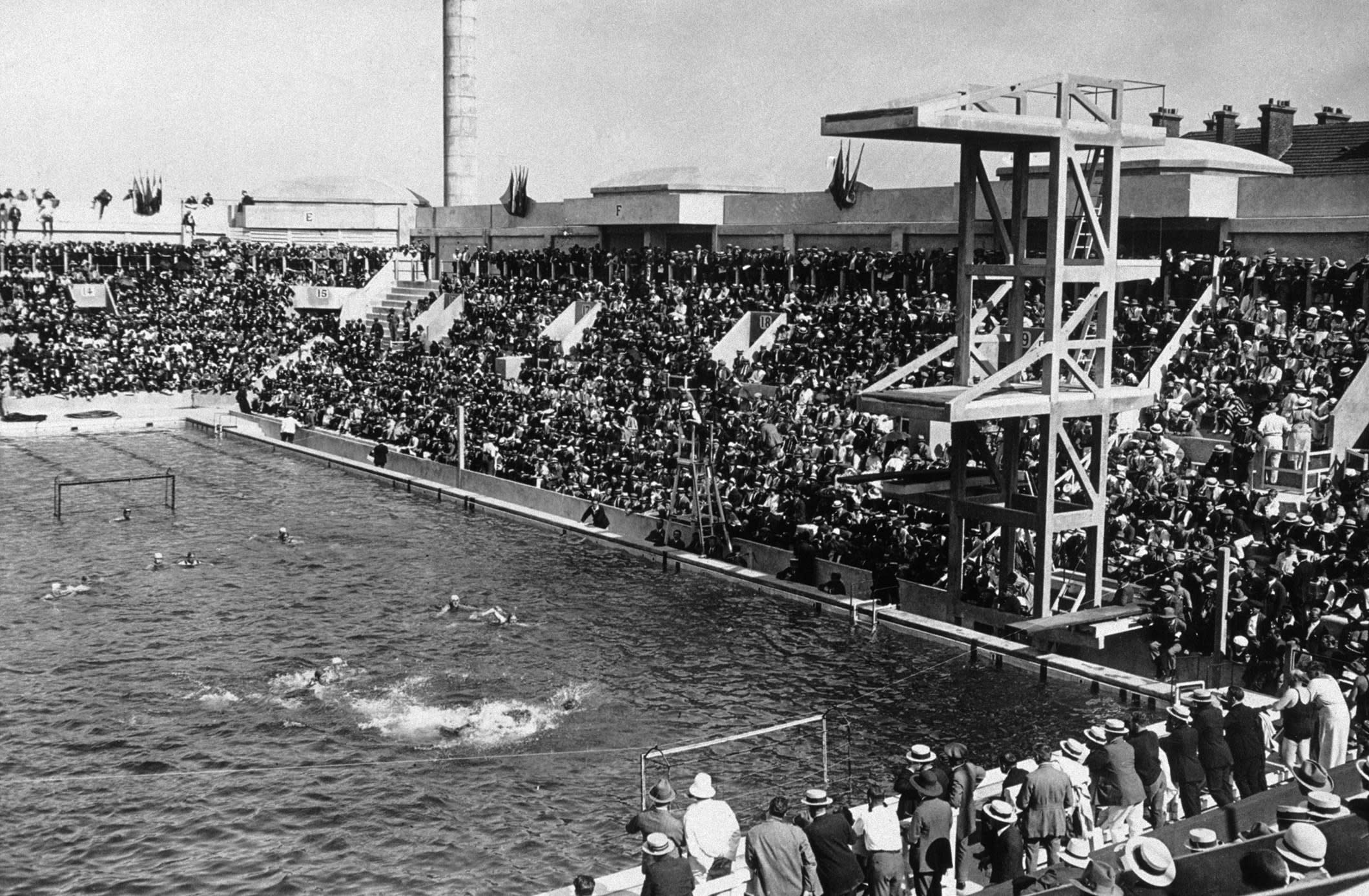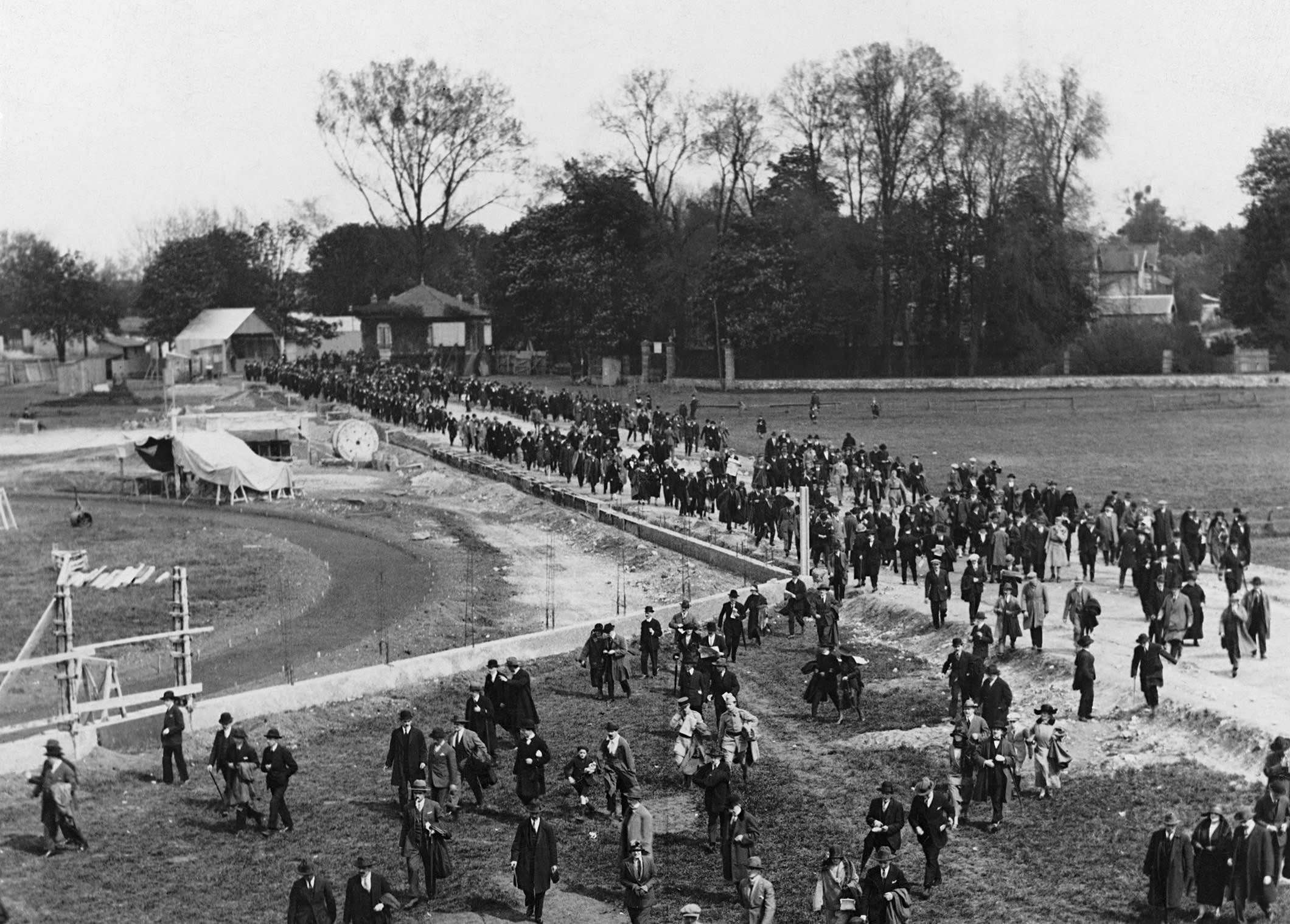Paris 1924: The Olympic Games come of age
Paris will host the Olympic Games for the third time in 2024. To mark that milestone, we look back at the second of two previous editions staged in the French capital.

The Olympic Games Paris 1924 were widely regarded as a major success. They marked a significant increase in the size and scale of the Games, with more NOCs and athletes taking part, and far more media coverage from around the world. Moreover, a clutch of sporting stars achieved feats that ensured their names would long be remembered.
Held on 2 June 1921, the 19th IOC Session was historic for a number of reasons, not least because it saw the award of not one but two editions of the Olympic Games, as Paris and Amsterdam were named the host cities of the 1924 and 1928 Games respectively.

As Pierre de Coubertin wrote in his Olympic Memoirs in 1931: “The decision was made to move two Olympiads into the future, one that nothing could stop the IOC from making, even though it had never been done before.”
The return of the Summer Games to Coubertin’s home city was the source of great personal satisfaction. Indeed, Paris 1924 represented a poignant swansong for the IOC founder, as just a year later he would step down from his position as president.
As part of the VIII Olympiad, it was also decided to stage an “International Winter Sports Week” in Chamonix, which would retrospectively be recognised the as the inaugural Olympic Winter Games.
Colombes, the beating heart of the Paris 1924 Olympics
The Olympic Games Paris 1924 ran from 4 May to 27 July, with the heart of the action being Colombes, a suburb in the north west of the city.
For the first time, all of the athletes stayed at an Olympic Village. Built near the Olympic Stadium, the Village comprised portable wooden houses complete with running water, and also featured a post office, bureau de change, hairdressing salon and a restaurant.

Formerly a racecourse that had in 1907 been converted into an arena hosting athletics, rugby and football (when it was known as the “Stade du Matin”), the Olympic Stadium was completely refurbished for the 1924 Games, with its capacity also being increased to 45,000, including seating for 20,000.
As well as hosting the Opening and Closing Ceremonies, it was also the venue for the track and field, football and rugby competitions. A new aquatics stadium and tennis courts were also built in the vicinity of the stadium.
As for the other sports, they were staged in and around Paris, just as they had been in 1900. The Velodrome de Vincennes was the venue for cycling, fencing, wrestling, boxing and weightlifting, while the equestrian events were held at the Hippodrome d’Auteuil.
The swimming events took place at the Piscine des Tourelles, which housed the first ever 50m Olympic pool, with lanes marked out by cork floats.
Among the other venues were Versailles, Issy-les-Moulineaux, Reims and Bassin d’Argenteuil, where the rowing and canoeing competitions took place, the latter being added to the programme as a demonstration sport.
Whereas only 29 National Olympic Committees had sent delegations to Antwerp 1920, that number increased to 44 in Paris. In total, 3,089 athletes (135 of them women) competed in 126 events in 17 sports, figures that reflected the growth of the Games in the intervening four-year cycle.
The event's rising popularity was confirmed by the presence of more than 1,000 journalists, some of whom covered the Games on the radio, the first time the Olympics had been broadcast on the airwaves.
It was also at Paris 1924 that the Olympic Art Competition reached its peak. Encompassing literature, sculpture, painting, architecture and music and also celebrating sport and Olympism, the competition boasted an illustrious jury that included Jean Giraudoux and Paul Claudel from the literary world, the composers Maurice Ravel and Bela Bartok, and the painter Fernand Léger.
The heroes of the Paris 1924 Olympics
Several athletes wrote their names into the Olympic history books at Paris 1924, not least the 'Flying Finns' of the track, Paavo Nurmi and Ville Ritola.
The winner of three golds and a silver at Antwerp 1920, Nurmi achieved a remarkable double in Colombes on 10 July, winning the 1500m and 5,000m within 55 minutes of each other.
Nurmi went on to win gold in the individual and team cross-country and the 3,000m team race to finish as the most successful athlete of the 1924 Games with five gold medals.
Ritola, who was also part of victorious Finnish cross-country and 3,000m team, also finished as runner-up to Nurmi in the 5,000m and the individual cross-country, while adding individual golds in the 10,000m and 3,000m steeplechase, to take his Paris 1924 medal tally to six, including four golds.
Also excelling on the track were Great Britain’s Harold Abrahams and Eric Liddell, the respective 100m and 400m champions. Their friendship and achievements inspired the 1981 film Chariots of Fire, which won four Oscars, including best Original Music Score for Vangelis.
Meanwhile, the USA’s Bud Houser completed a unique double in winning the shot put and discus.

The star of the swimming pool was a 20-year-old American by the name of Johnny Weissmuller, who deprived his compatriot and future surf pioneer Duke Kahanamoku of a third straight 100m freestyle gold.
In 1922, Weissmuller had become first man to dip under a minute in the event , and he did so again in Paris, stopping the clock at 59 seconds dead, with Kahanamoku’s brother Samuel finishing third to complete an American podium sweep.
Weissmuller went on to win 400m freestyle and 4x200m freestyle relay gold, and he also turned out for the USA’s water polo team, helping them to claim bronze.
He continued his Olympic career at Amsterdam 1928 before embarking on a successful movie career in which he went on to star as Tarzan in a dozen films.

France’s Roger Ducret stole the show in fencing, winning five medals across all three weapons, including golds in the individual and team foil and the team épée. Denmark’s Ellen Osiier won gold as women’s foil made its Olympic debut.
Meanwhile, tennis made its last appearance on the Olympic programme before a six-decade hiatus, only returning at Seoul 1988.
The USA’s Vincent Richards won the men’s singles and doubles and picked up silver in the mixed doubles, while the women’s singles title went to Helen Wills-Moody, one of the greatest players of all time, who also won a women’s doubles gold.
Finally, Titanic survivor Richard Norris Williams teamed up with Hazel Hotchkiss Wightman to win the mixed doubles and complete a clean sweep for American tennis.

Rugby also made its final appearance before a hiatus of over 90 years (it only returned to the Olympic programme at Rio 2016), with the USA beating France 17-3 in the final, much to the disappointment of a capacity crowd at the Stade de Colombes.
The American side featured several of the players who had won gold in Antwerp four years earlier, among them captain Colby Slater. They were rugby’s only double Olympic champions until Fiji claimed consecutive triumphs at Rio 2016 and Tokyo 2020.
In the final of the football tournament, Uruguay beat Switzerland 3-0 thanks in no small part to their star man Jose Leandro Andrade, who was voted player of the tournament.
Andrade went on to retain their Olympic title in 1928, and starred once again as the Uruguayans won the inaugural FIFA World Cup in 1930.
Paris 1924's legacy
French athlete Georges André took the Olympic oath at the Opening Ceremony, while a solemn tribute was paid to Pierre de Coubertin on 23 June to mark the 30th anniversary of the birth of the modern Olympic Games.
The Closing Ceremony on 27 July saw an innovation that has since become an iconic Olympic tradition, with three flags being raised: the Olympic flag and the flags of the current and future host nations, in this case France and the Netherlands.
Aside from attracting a large number of reporters and being the first Games to be broadcast over the radio, Paris 1924 also proved a success with the public, with a total of 625,000 spectators turning out to watch the events.
Now known as the Stade Yves-du-Manoir, the Stade Olympique de Colombes is still going strong, having been refurbished several times. At Paris 2024 it will be used to host the hockey competitions.
Another venue still in use is the Piscine des Tourelles, which has been renamed the Piscine Georges-Vallerey. Built especially for the 1924 Games, it now has a retractable roof and is used by the people of Paris for a variety of aquatic sports.

Versailles and its famous palace, which served as the venue for the shooting events at the French in 1924, will, a century later, provide the setting for the Olympic equestrian and modern pentathlon competitions.
In his introduction to the Official Report of the Olympic Games Paris 1924, Frantz Reichel, the secretary general of the Organising Committee, wrote of how far the Olympic Movement had come since the inaugural Olympic Congress in 1894.
“Thirty years later, I am once again called here to enjoy the intense experience of the Games of the VIII Olympiad… Is this unanimity not, in fact, proof that the Olympic Games now play a prominent role in relations between nations?” he said.

“In bringing young people from every country together, they help foster this sense of cordiality that teaches men to become acquainted with each other better first and then to hold each other in higher esteem, a process that the Paris Games will have greatly aided, thanks to the sheer number of people they attract.”
These words still resonate almost a century later, as Paris readies itself to welcome the Olympic Games for the third time.


